-
 Bitcoin
Bitcoin $107,631.9817
-1.73% -
 Ethereum
Ethereum $2,739.1787
-4.61% -
 Tether USDt
Tether USDt $1.0000
-0.01% -
 XRP
XRP $2.2427
-3.30% -
 BNB
BNB $664.0527
-0.73% -
 Solana
Solana $158.0902
-5.38% -
 USDC
USDC $0.9998
-0.01% -
 Dogecoin
Dogecoin $0.1876
-7.78% -
 TRON
TRON $0.2753
-3.21% -
 Cardano
Cardano $0.6820
-5.55% -
 Hyperliquid
Hyperliquid $43.0171
-0.38% -
 Sui
Sui $3.3308
-4.87% -
 Chainlink
Chainlink $14.3431
-7.89% -
 Avalanche
Avalanche $21.0266
-6.48% -
 Bitcoin Cash
Bitcoin Cash $437.7657
-1.56% -
 Stellar
Stellar $0.2746
-2.52% -
 UNUS SED LEO
UNUS SED LEO $8.8665
-1.96% -
 Toncoin
Toncoin $3.1885
-3.37% -
 Shiba Inu
Shiba Inu $0.0...01260
-6.84% -
 Hedera
Hedera $0.1686
-4.93% -
 Litecoin
Litecoin $88.8406
-5.16% -
 Polkadot
Polkadot $4.0542
-6.28% -
 Monero
Monero $322.5806
-4.20% -
 Ethena USDe
Ethena USDe $1.0004
-0.02% -
 Bitget Token
Bitget Token $4.7089
-3.10% -
 Dai
Dai $0.9998
-0.01% -
 Pepe
Pepe $0.0...01206
-9.06% -
 Uniswap
Uniswap $7.8694
-5.20% -
 Pi
Pi $0.6232
-2.68% -
 Aave
Aave $301.3815
-3.83%
How to read the high and low after the volume? This is how the main force intends to judge!
High volume in crypto trading signals strong market interest, while analyzing price action after volume shifts helps traders anticipate trends and institutional moves.
Jun 11, 2025 at 10:08 pm
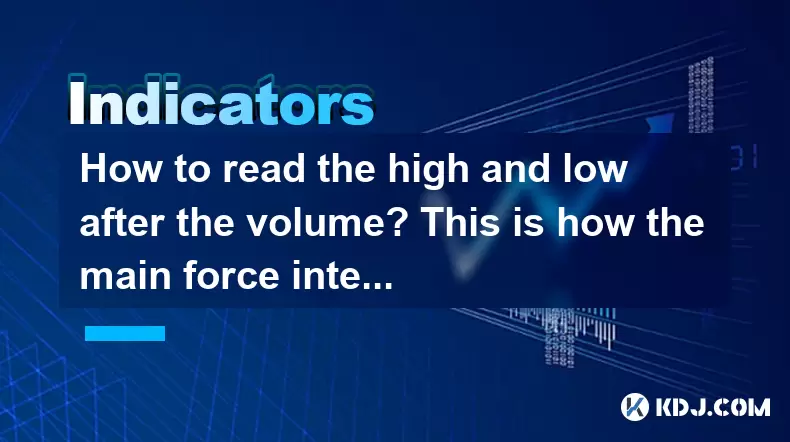
Understanding Volume in Cryptocurrency Trading
In the world of cryptocurrency trading, volume plays a critical role in determining the strength and validity of price movements. Volume refers to the total number of assets traded during a specific period, typically 24 hours. It helps traders assess the level of interest or participation from market participants. High volume usually signals strong interest, while low volume might indicate indecision or lack of conviction.
When analyzing volume, it's essential to understand how it interacts with price action. A rising price accompanied by increasing volume is generally considered a healthy sign, indicating strong buying pressure. Conversely, if the price rises but volume remains flat or declines, it may suggest that the move lacks support and could be short-lived.
What Does "High and Low After the Volume" Mean?
The phrase "high and low after the volume" often refers to observing how price behaves after a significant volume spike or drop. This concept is used by experienced traders to determine whether the current trend is likely to continue or reverse. When volume surges and is followed by a sharp price movement, it can indicate that major players — often referred to as the "main force" — are entering or exiting positions.
Traders look for patterns such as:
- A sudden increase in volume followed by a price breakout
- A sharp drop in volume after a rally, suggesting profit-taking
- Volume spikes at key support or resistance levels
By carefully monitoring these patterns, traders can gain insights into potential future price movements and align their strategies accordingly.
How Institutional Traders Use Volume to Gauge Intent
Institutional investors and large trading entities — the so-called "main force" — often leave footprints in volume data. These players cannot enter or exit large positions without affecting the market significantly. Their actions are reflected through volume anomalies that retail traders can analyze.
For example:
- Sudden volume spikes without corresponding price movement may suggest accumulation or distribution
- Consistent high volume during sideways consolidation can imply that big players are building or reducing positions
- Volume collapsing during a downtrend may signal that selling pressure is subsiding
These observations help traders anticipate where the real power lies in the market and whether a reversal or continuation is more likely.
Technical Tools to Analyze Volume and Price Interaction
To effectively interpret the relationship between volume and price, traders use various technical tools:
- On-Balance Volume (OBV): This indicator adds volume on up days and subtracts it on down days to show buying and selling pressure over time.
- Volume Moving Averages: Comparing current volume to its moving average helps identify abnormal activity.
- Volume Profile: Displays the amount of trading activity at specific price levels, helping traders find areas of value and institutional interest.
- Candlestick Charts with Volume Bars: Overlaying volume beneath candlesticks provides a visual representation of how much activity occurred during each price bar.
Using these tools together allows traders to form a comprehensive view of market sentiment and possible upcoming moves.
Reading Price Action After Significant Volume Shifts
Once a notable volume shift occurs, the next step is to observe how the price reacts. Here’s what to look for:
- After a high-volume bullish candle: If the following candles maintain above the previous candle’s close and hold support, it suggests strength. However, if the price fails to hold and reverses sharply, it could mean that the initial move was a trap.
- After a high-volume bearish candle: Continued downward movement with sustained volume supports a bearish outlook. If the price stabilizes or rebounds quickly, the initial selloff may have been exaggerated.
- After a low-volume period: Consolidation with shrinking volume often precedes a breakout. The direction of the breakout depends on which side absorbs the order flow first.
Each of these scenarios gives clues about the intentions of the main force and whether they are pushing the price higher or lower.
Common Misinterpretations of Volume Patterns
Many traders fall into the trap of misreading volume patterns. One common mistake is assuming that a single volume spike always signals a strong trend. In reality, volume must be analyzed in context with price structure and market conditions.
Other pitfalls include:
- Ignoring timeframes: A volume surge on a 1-hour chart may not carry the same weight as one on the daily chart.
- Overreacting to isolated spikes: Not every volume anomaly indicates institutional activity; sometimes it's just noise.
- Failing to consider liquidity: High volume in an illiquid market can create misleading signals.
Avoiding these errors requires discipline and a structured approach to interpreting volume alongside other confirming indicators.
Frequently Asked Questions
Q: Can volume alone predict price movements accurately?
A: No single metric can guarantee accurate predictions. While volume provides valuable insights, it should always be used in conjunction with price action, trend analysis, and other technical indicators for better accuracy.
Q: How do I differentiate between retail and institutional volume?
A: Institutional volume tends to appear as consistent, large blocks of trades rather than erratic, smaller ones typical of retail traders. Tools like volume profile and order book analysis can help distinguish between the two.
Q: What does it mean when volume increases but the price doesn’t move?
A: This situation often indicates a tug-of-war between buyers and sellers. It may signal either a buildup before a breakout or a temporary stalemate where neither side has enough control to push the price decisively.
Q: Should I always follow volume spikes blindly?
A: Absolutely not. Blindly following volume spikes can lead to false signals. Always wait for confirmation through price behavior and consider the broader context of the market before making decisions.
Disclaimer:info@kdj.com
The information provided is not trading advice. kdj.com does not assume any responsibility for any investments made based on the information provided in this article. Cryptocurrencies are highly volatile and it is highly recommended that you invest with caution after thorough research!
If you believe that the content used on this website infringes your copyright, please contact us immediately (info@kdj.com) and we will delete it promptly.
- Starting June 16, the Floki team will run a five-week global marketing campaign for its play-to-earn game, Valhalla.
- 2025-06-13 04:00:45
- Nightmare Accessory Airdrop 2 rewards will be distributed in June
- 2025-06-13 04:00:45
- Brazil Implements New Crypto Tax Rules That Will Benefit the Rich
- 2025-06-13 03:56:44
- Solana Surges 14% Following Clear Buy Signal, Drawing Renewed Attention
- 2025-06-13 03:50:13
- Chainlink, JPMorgan and Ondo Finance Enable Crosschain Treasury Settlement Breakthrough
- 2025-06-13 03:50:13
- Kaanch Network is a leader in the cryptocurrency market, which provides a Layer-1 blockchain solution
- 2025-06-13 03:45:13
Related knowledge
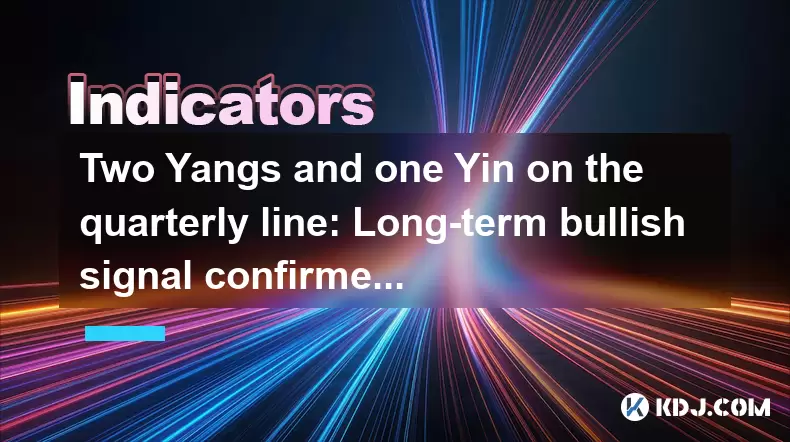
Two Yangs and one Yin on the quarterly line: Long-term bullish signal confirmed?
Jun 12,2025 at 07:00am
Understanding the 'Two Yangs and One Yin' Candlestick PatternIn technical analysis, candlestick patterns play a pivotal role in identifying potential market reversals or continuations. The 'Two Yangs and One Yin' pattern is one such formation that traders often observe on longer timeframes like the quarterly chart. This pattern consists of two bullish (...
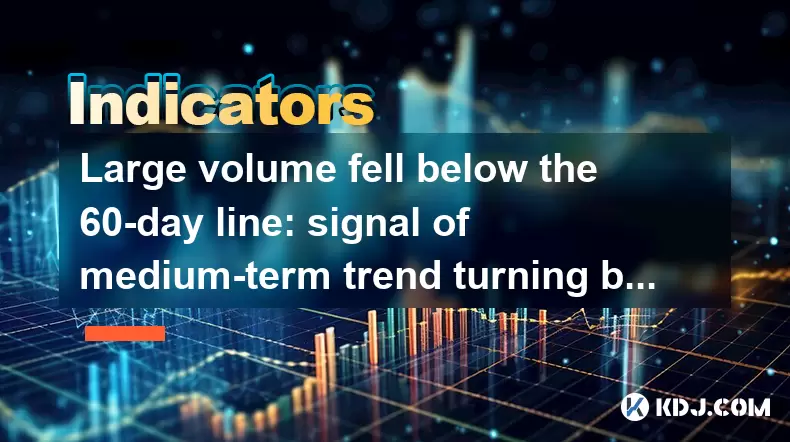
Large volume fell below the 60-day line: signal of medium-term trend turning bearish?
Jun 13,2025 at 03:42am
Understanding the 60-Day Moving Average in CryptocurrencyIn cryptocurrency trading, technical analysis plays a crucial role in predicting price movements. One of the most commonly used indicators is the 60-day moving average (MA), which smooths out price data over the last 60 days to provide traders with insights into the medium-term trend. When large v...
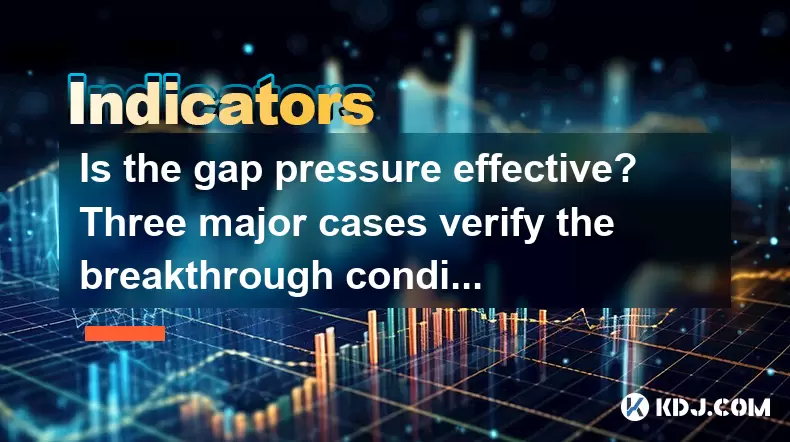
Is the gap pressure effective? Three major cases verify the breakthrough conditions
Jun 13,2025 at 04:35am
Understanding the Gap Pressure in Cryptocurrency TradingIn cryptocurrency trading, gap pressure refers to a technical analysis concept where price gaps form due to sudden market movements. These gaps often occur between the closing price of one trading session and the opening price of the next. Traders pay close attention to these gaps because they can ...
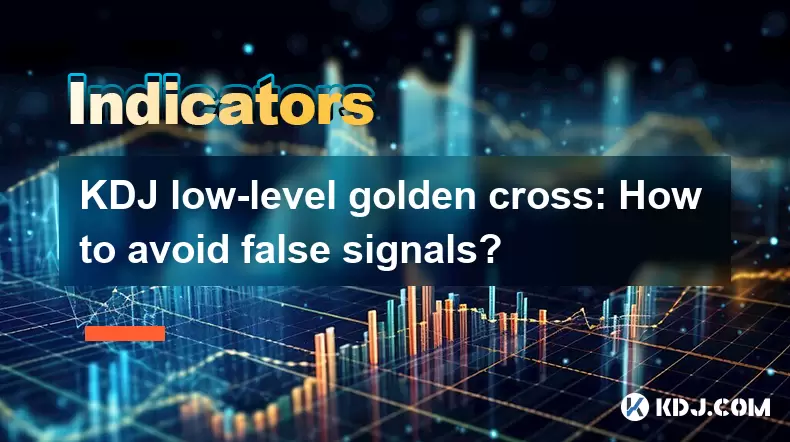
KDJ low-level golden cross: How to avoid false signals?
Jun 12,2025 at 08:21am
Understanding the KDJ IndicatorThe KDJ indicator, also known as the stochastic oscillator, is a momentum-based technical analysis tool widely used in cryptocurrency trading. It consists of three lines: the %K line (fast stochastic), the %D line (slow stochastic), and the %J line (divergence value). These lines oscillate between 0 and 100, helping trader...

Bottom-up volume stagnation: Is it accumulation or heavy selling pressure?
Jun 12,2025 at 01:42pm
What Is Bottom-Up Volume Stagnation?Bottom-up volume stagnation refers to a specific pattern observed in cryptocurrency trading charts where the price of an asset moves sideways or slightly downward, and trading volume remains consistently low over an extended period. This phenomenon is often seen after a sharp price drop or during a prolonged bear mark...
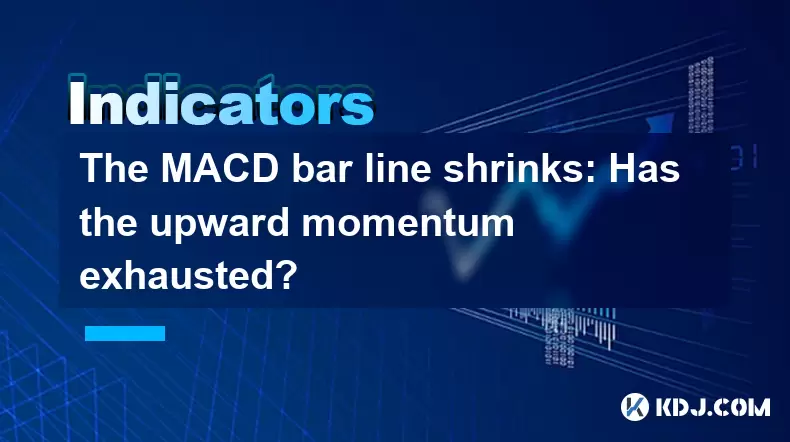
The MACD bar line shrinks: Has the upward momentum exhausted?
Jun 12,2025 at 12:49am
Understanding the MACD Bar LineThe Moving Average Convergence Divergence (MACD) is a widely used technical indicator in cryptocurrency trading. It consists of three main components: the MACD line, the signal line, and the MACD histogram (also known as the bar line). The MACD bar line represents the difference between the MACD line and the signal line. W...

Two Yangs and one Yin on the quarterly line: Long-term bullish signal confirmed?
Jun 12,2025 at 07:00am
Understanding the 'Two Yangs and One Yin' Candlestick PatternIn technical analysis, candlestick patterns play a pivotal role in identifying potential market reversals or continuations. The 'Two Yangs and One Yin' pattern is one such formation that traders often observe on longer timeframes like the quarterly chart. This pattern consists of two bullish (...

Large volume fell below the 60-day line: signal of medium-term trend turning bearish?
Jun 13,2025 at 03:42am
Understanding the 60-Day Moving Average in CryptocurrencyIn cryptocurrency trading, technical analysis plays a crucial role in predicting price movements. One of the most commonly used indicators is the 60-day moving average (MA), which smooths out price data over the last 60 days to provide traders with insights into the medium-term trend. When large v...

Is the gap pressure effective? Three major cases verify the breakthrough conditions
Jun 13,2025 at 04:35am
Understanding the Gap Pressure in Cryptocurrency TradingIn cryptocurrency trading, gap pressure refers to a technical analysis concept where price gaps form due to sudden market movements. These gaps often occur between the closing price of one trading session and the opening price of the next. Traders pay close attention to these gaps because they can ...

KDJ low-level golden cross: How to avoid false signals?
Jun 12,2025 at 08:21am
Understanding the KDJ IndicatorThe KDJ indicator, also known as the stochastic oscillator, is a momentum-based technical analysis tool widely used in cryptocurrency trading. It consists of three lines: the %K line (fast stochastic), the %D line (slow stochastic), and the %J line (divergence value). These lines oscillate between 0 and 100, helping trader...

Bottom-up volume stagnation: Is it accumulation or heavy selling pressure?
Jun 12,2025 at 01:42pm
What Is Bottom-Up Volume Stagnation?Bottom-up volume stagnation refers to a specific pattern observed in cryptocurrency trading charts where the price of an asset moves sideways or slightly downward, and trading volume remains consistently low over an extended period. This phenomenon is often seen after a sharp price drop or during a prolonged bear mark...

The MACD bar line shrinks: Has the upward momentum exhausted?
Jun 12,2025 at 12:49am
Understanding the MACD Bar LineThe Moving Average Convergence Divergence (MACD) is a widely used technical indicator in cryptocurrency trading. It consists of three main components: the MACD line, the signal line, and the MACD histogram (also known as the bar line). The MACD bar line represents the difference between the MACD line and the signal line. W...
See all articles

























































































